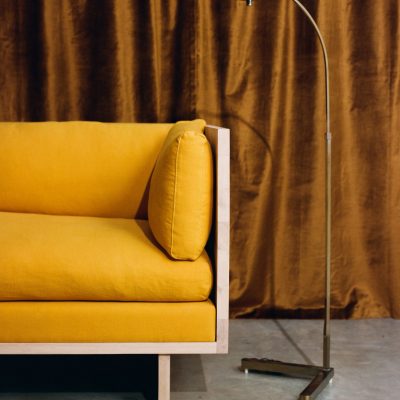Cultural Co-dependence
Architectural practice Buckley Gray Yeoman has unveiled Cromwell Place, a 14-gallery arts hub in London's museum district that mixes sensitive restoration and new build


London has a new cultural hub in the shape of Cromwell Place. Architecture practice Buckley Gray Yeoman has converted five adjacent terraced townhouses in South Kensington to create a sequence of galleries that can be thought of as a sort of co-working space for fine art. International galleries and dealers are able to join as members and gain a platform in London to show work across all specialisms: this means that they don’t have to commit to a permanent physical presence in the capital, with all the overheads that come with it.
“As designers, we were challenged to marry the heritage of the Grade-II listed building with the demands of a contemporary art space and we are extremely happy with the finished gallery spaces,” says Paul White, founding director or Buckley Gray Yeoman. The practice was tasked with creating 14 separate galleries, both sensitively converting the original historic fabric and creating a new pavilion within a courtyard. With ceiling heights of up to 4.6 metres and a column-free space of 143 sqm, the pavilion is intended as the headline gallery for major exhibitions.




We were challenged to marry the heritage of the Grade-II listed building with the demands of a contemporary art space
In the original townhouses, period features, such as the fireplaces and the sweeping staircases with their ironwork balustrades and timber handrails, have been restored. A series of glazed bridges link old a new while providing views over the pavilion’s distinctive saw-tooth roof, clad in blackened stainless steel.
Art galleries being specialist environments, the buildings also incorporate climate-controlled storage facilities as well as packing and shipping areas, all compelling incentives for international galleries to take up membership. Members can take a permanent office at Cromwell Place or just drop by and use some of the shared working space. They don’t have to be gallerists but individual dealers and curators, too, many of whom traditionally work alone: such cross-fertilisation is sure to be good for making and sharing connections.



The inaugural shows point to Cromwell Place’s eclectic, international outlook. Budapest-based gallery Initio Fine Arts took over one of the spaces for its first London show, Identity Design, a twin exploration of the work of Hungarian designer Anna Horváth and French architect and designer Reda Amalou. Moroccan artist Mohamed Melehi’s work was showcased by Dubai gallery Lawrie Shabibi; while contemporary Kazakh art was put in the spotlight by Almaty-based arts hub Aspan Gallery, featuring the work of Almagul Menlibayeva and Yerbossyn Meldibekov, both artists who were born in the 1960s and broke away from traditional Soviet conventions.



Coming up are Ethiopian modernist Tadesse Mesfin presented by Addis Fine Art London and British artist Andrew Gifford’s minutely observed painting of hawthorn trees, from John Martin Gallery (Martin is one of the driving forces behind Cromwell Place). These first few shows couldn’t illustrate better this new initiative’s purpose to provide a truly international snapshot of fine art while supporting smaller galleries, and the fairly swift turnaround of shows ensures there’s always going to be a compelling reason to drop by.



